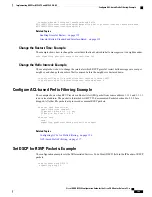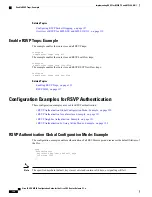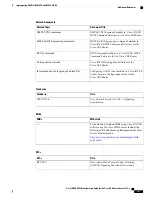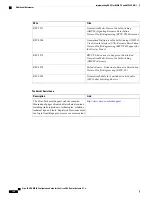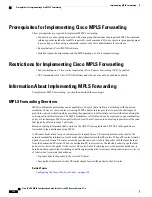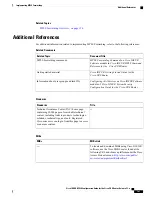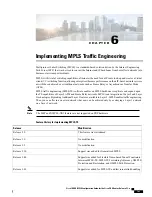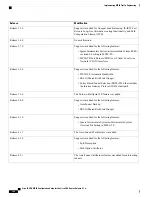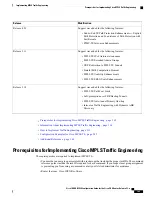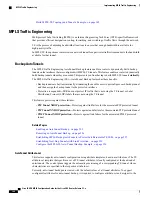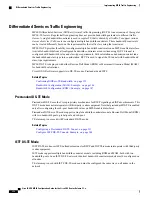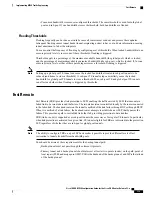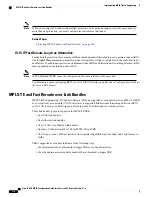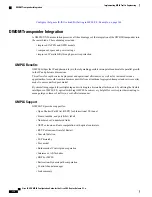
C H A P T E R
6
Implementing MPLS Traffic Engineering
Multiprotocol Label Switching (MPLS) is a standards-based solution driven by the Internet Engineering
Task Force (IETF) that was devised to convert the Internet and IP backbones from best-effort networks into
business-class transport mediums.
MPLS, with its label switching capabilities, eliminates the need for an IP route look-up and creates a virtual
circuit (VC) switching function, allowing enterprises the same performance on their IP-based network services
as with those delivered over traditional networks such as Frame Relay or Asynchronous Transfer Mode
(ATM).
MPLS traffic engineering (MPLS-TE) software enables an MPLS backbone to replicate and expand upon
the TE capabilities of Layer 2 ATM and Frame Relay networks. MPLS is an integration of Layer 2 and Layer
3 technologies. By making traditional Layer 2 features available to Layer 3, MPLS enables traffic engineering.
Thus, you can offer in a one-tier network what now can be achieved only by overlaying a Layer 3 network
on a Layer 2 network.
The LMP and GMPLS-NNI features are not supported on PRP hardware.
Note
Feature History for Implementing MPLS-TE
Modification
Release
This feature was introduced.
Release 2.0
No modification.
Release 3.0
No modification.
Release 3.2
Support was added for Generalized MPLS.
Release 3.3.0
Support was added for Flexible Name-based Tunnel Constraints,
Interarea MPLS-TE, MPLS-TE Forwarding Adjacency, GMPLS
Protection and Restoration, and GMPLS Path Protection.
Release 3.4.0
Support was added for MPLS-TE and fast reroute link bundling.
Release 3.4.1
Cisco IOS XR MPLS Configuration Guide for the Cisco CRS Router, Release 5.1.x
163

